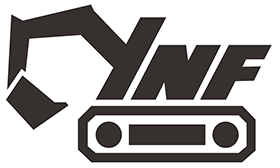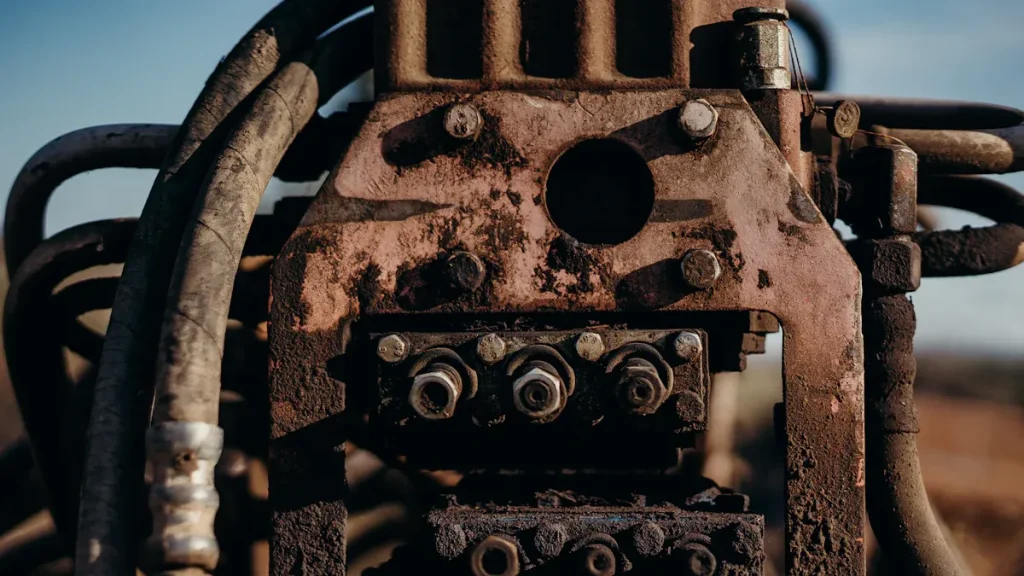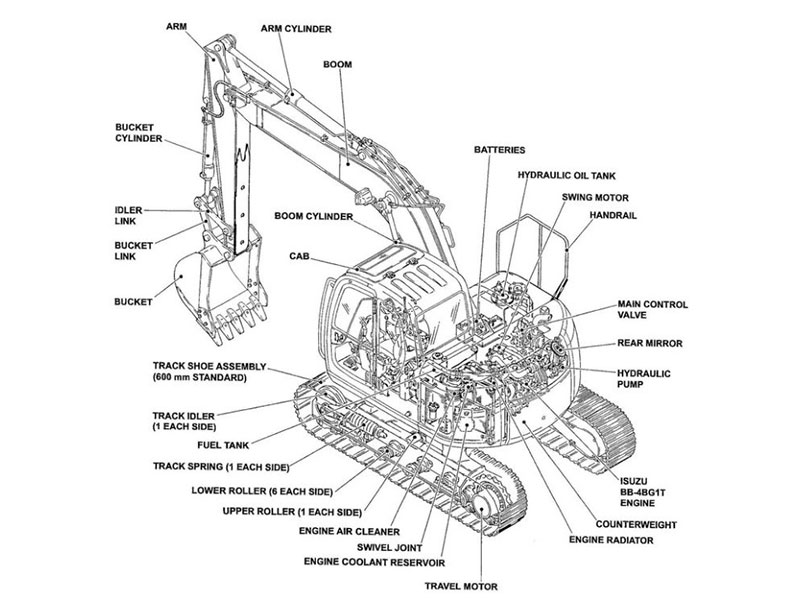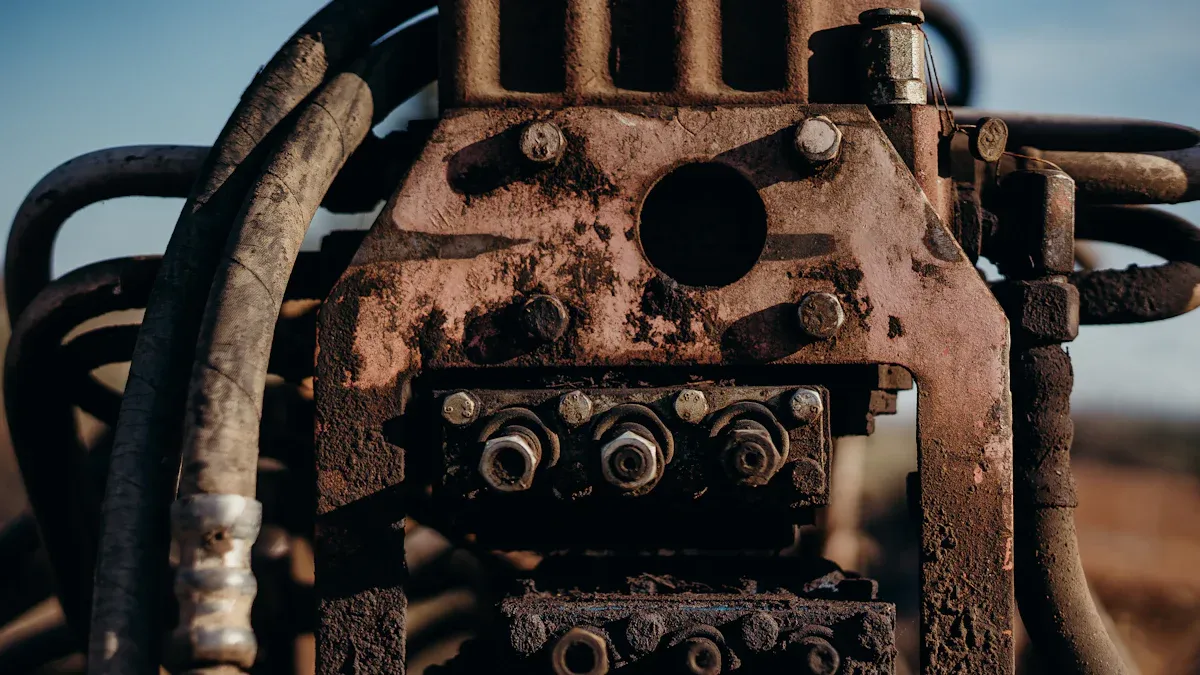
You must know your excavator’s model and serial number first. This helps you pick the right excavator control valve parts. If you use the wrong parts, your excavator cab or boom can get damaged. The hydraulic system can also get hurt. Some common problems are dust and dirt getting inside, seals wearing out, overheating, and low fluid levels. These issues can make the excavator cab stop working. This can cost a lot of money and time. Always check your excavator’s condition. Look at the excavator cab for any signs of damage. Keep the excavator boom clean. Picking the right excavator control valve parts keeps your machine safe. It also helps you avoid expensive repairs.
Key Takeaways
First, find your excavator’s model and serial number. This helps you get the right control valve parts. It also helps you avoid damage.
Use parts diagrams to help you. Match part numbers carefully. This makes sure the parts fit your excavator’s hydraulic system.
Learn about the main valve types. These are directional, pressure, and flow valves. Pick the right one for your machine’s needs.
Pick good quality parts from trusted suppliers. OEM parts fit best. Reliable aftermarket parts can save you money.
Make sure new parts fit your hydraulic pump. Test your system after installing new parts. This keeps your excavator working well and safely.
Identify Excavator Control Valve Parts
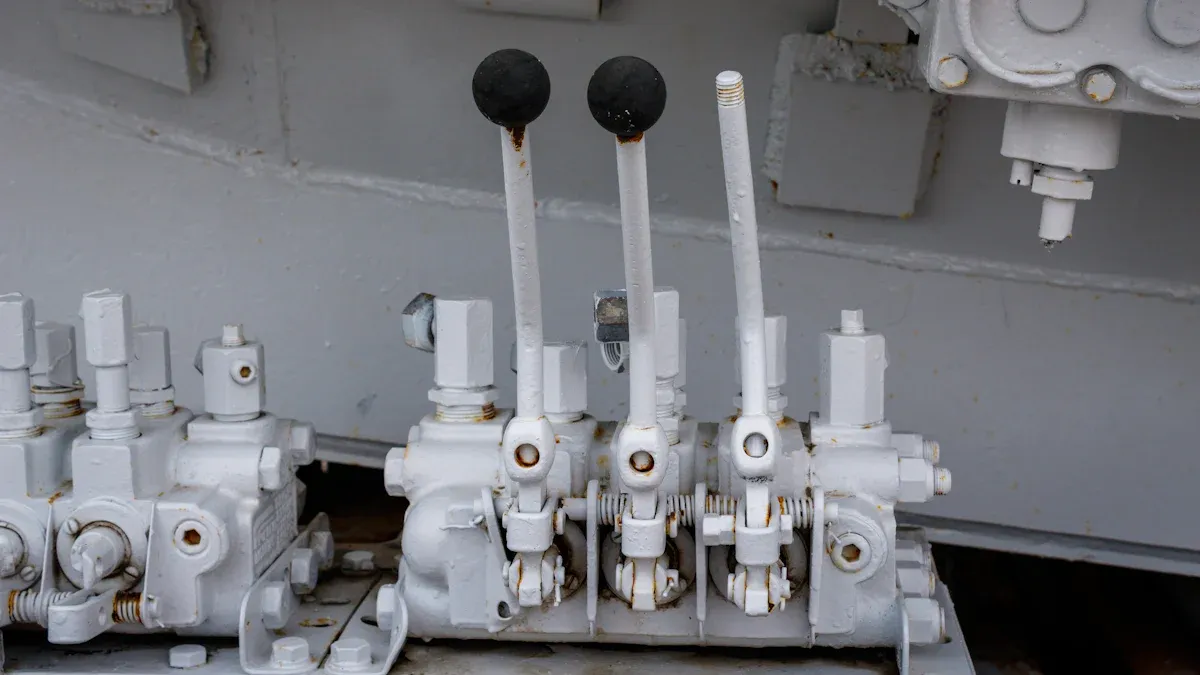
To pick the right excavator control valve parts, you must know which ones fit. If you use the wrong parts, your excavator cab or excavator boom can have problems. The hydraulic system might stop working right. Here are some ways to avoid mistakes and keep your machine working well.
Find Model and Serial Number
First, look for your excavator’s model and serial number. These numbers help you find the right excavator control valve parts. You can find them on a plate inside the excavator cab or near the excavator boom. If you do not see them, check your operator’s manual. The manual tells you where to look and how to use the numbers to order new parts.
Tip: Write down your model and serial number before you look for parts. This will save you time and help you get the right items.
Use Parts Diagrams
Excavator parts diagrams help you find the right parts. These diagrams show every part, like the excavator control valve parts, excavator boom, excavator arm, and excavator bucket. You can see how each part fits together. This makes it easier to find what you need.
ConEquip has many excavator parts diagrams for different brands and models. Their diagrams have clear labels for each part, so you do not get confused.
You can ask their parts specialists for help if you cannot read a diagram or find a part.
They have over 5 million parts, so you can find the right match for your excavator arm, excavator cab, or excavator bucket.
Using a trusted supplier like ConEquip helps you avoid mistakes and gets your machine working faster.
Parts diagrams also help you avoid common mistakes. Sometimes, people pick the wrong part because of leaks, strange sounds, or low pressure. These problems can happen from dirty hydraulic fluid or worn seals. With a clear excavator parts diagram, you can check each part and order the right one.
Match Part Numbers
The last step is to match part numbers. Every part has its own number. Always check the number on your old part or in your manual. Then, compare it with the number in the excavator parts diagram.
Look at the part number on your old part or in your manual.
Compare this number with the one in the excavator parts diagram.
Make sure the part matches your excavator’s needs.
Pick OEM parts for the best fit, or choose good aftermarket parts from trusted suppliers.
Ask parts specialists for help if you are not sure. They can help you find the right parts for your excavator boom, excavator arm, or excavator cab.
Note: Many mistakes happen when people skip these steps. Dirty fluid, broken springs, or not knowing how the valve works can make you order the wrong part. Keep your hydraulic fluid clean and check your excavator often to stop these problems.
If you follow these steps—find your model and serial number, use a parts diagram, and match part numbers—you can pick the right excavator control valve parts. This keeps your excavator cab, excavator boom, excavator arm, and excavator bucket safe and helps your machine work its best.
Understand Excavator Main Control Valve Types
Directional, Pressure, and Flow Valves
You should know the main types of excavator main control valve parts. Each type does a special job in your machine. The table below shows three main types, some examples, and what they do in the hydraulic system:
Valve Type | Examples | Function |
|---|---|---|
Directional Valves | Spool valves, Check valves, Ball valves | Send hydraulic fluid to certain parts. They control which way the actuator moves. |
Pressure Valves | Relief valves, Pressure reducing valves | Stop too much pressure by moving fluid away. This keeps system parts safe. |
Flow Control Valves | Throttle valves, Proportional valves | Change how fast fluid moves. This controls how fast the actuator goes. |
Directional valves send hydraulic fluid to the right spot. When you move the excavator boom, excavator arm, or excavator bucket, these valves help each part move the way you want. Pressure valves keep your machine safe. They stop the hydraulic system from getting too much pressure. Too much pressure can hurt the excavator boom or excavator arm. Flow control valves help you control how fast the excavator bucket or excavator arm moves. This gives you smooth and steady movement for every job.
Function in Hydraulic Systems
Your excavator main control valve is like the heart of the hydraulic system. It lets you control the excavator boom, excavator arm, and excavator bucket with care. When you use the controls, the main control valve sends hydraulic fluid to the right cylinder. This makes the excavator boom lift, the excavator arm stretch out, or the excavator bucket curl.
You must pick the right type of excavator main control valve for your machine. Here are some things to check:
Make sure the valve matches your excavator’s pressure and flow needs.
Check that the valve fits your excavator boom, excavator arm, and excavator bucket.
Look for valves that seal well and are easy to take care of.
Tip: If you do not know which valve to pick, ask a hydraulic specialist. The right valve keeps your excavator safe and working well.
Picking the correct excavator main control valve helps your excavator hydraulic system work better. You get more control, less damage, and longer life for your excavator boom, excavator arm, and excavator bucket.
Check Quality and Material
OEM vs Aftermarket
When you pick excavator control valve parts, you have two choices. You can use OEM parts or aftermarket parts. OEM parts are made by the original company. These parts fit your excavator very well. They give you the best quality and work the best. OEM parts cost more money, but they last longer. They also come with a strong warranty and good support.
Aftermarket parts are made by other companies. These parts fit many kinds of excavators. They usually cost less than OEM parts. Some aftermarket parts use new materials and good methods. If you choose a trusted brand, they can last as long as OEM parts. The warranty may be shorter, but you can get these parts faster. This helps your excavator get fixed sooner. No matter what you pick, always check your hydraulic fluid and seals. This keeps your excavator working well.
Tip: If your excavator is new or very valuable, OEM parts are the best choice for quality and fit.
Material Durability
The material of your excavator control valve parts is important. Good materials help your excavator work in hard jobs. Look at the table below to see how different materials do:
Material Type | Durability Impact |
|---|---|
Zinc-plated fittings | Good for light jobs, but they rust and wear out fast in tough places. |
Stainless steel | Very strong and does not rust. Best for hard jobs and places that are hard to reach. |
Some control valves, like the E235BSRLC, use special materials and new technology. These valves are tested to make sure they last a long time. This means your excavator will break down less and need fewer repairs.
Precision and Performance
How well excavator control valve parts are made is very important. Good steel and heat treatment make the valves strong. Good seals stop leaks from happening. Every part must fit your excavator just right. Factories use forging, sandblasting, and pressure tests to check every valve.
You want your excavator to move safely and smoothly. When parts are made with care, your excavator works better and lasts longer. Always look for valves that meet industry rules, like ISO 4401 or CE certification. These rules show the parts have passed hard tests for quality and fit.
Ensure Compatibility with Excavator Hydraulic Pump
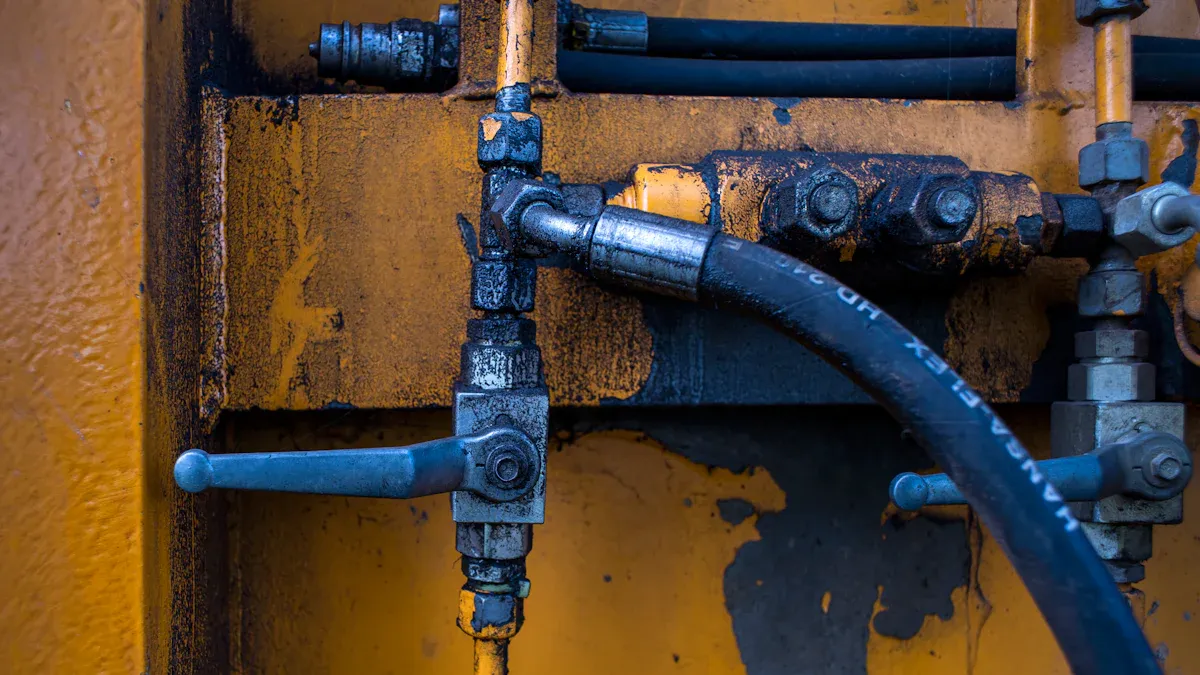
System Requirements
You need to make sure your excavator control valve parts work well with your excavator hydraulic pump. Each excavator has its own system requirements. These requirements include how much pressure the pump can handle, how fast the fluid moves, and how the valves control the flow. If you pick the wrong part, your excavator may not work right or could even get damaged.
Hydraulic system requirements shape your choice of control valves. Directional valves help you move the boom, stick, and bucket. Pressure relief valves keep your excavator safe by stopping too much pressure. Flow control valves let you change how fast the parts move. Pilot valves help you control the main valves, making every movement smooth. You must match these valves to your excavator hydraulic pump to get the best performance and safety.
Tip: Always check your operator’s manual for the right pressure and flow numbers before you buy new parts.
Fit and Function
You want your excavator to run smoothly every day. To do this, you must check that your new control valve parts fit and work with your excavator hydraulic pump. Follow these steps to make sure you get the right fit and function:
Check that the new control valve matches the model and specs of your excavator hydraulic pump.
After you install the part, test the system to see if everything works together.
Run pressure and flow tests to make sure the system stays within safe limits.
Look for leaks, wear, or damage during regular checks.
Keep your hydraulic fluid clean and change filters often.
These steps help you avoid problems like leaks, low power, or sudden breakdowns. Good fit and function mean your excavator will last longer and work better. You protect your investment and keep your machine ready for any job. When you focus on quality and compatibility, you get the best results from your excavator.
Evaluate Supplier and Compare Value
Supplier Reputation
You need a supplier you can trust, like YNF Machinery. A good supplier keeps your excavator cab working well. Experts use some main points to check if a supplier is good:
The supplier follows OEM rules and tests parts well.
They use new machines and smart ways to make parts.
Their staff helps you, gives a warranty, and ships fast.
They make parts for big brands like Komatsu and Caterpillar.
They give clear details and tell you what fits your machine.
They have quality awards, like ISO 9001.
They keep enough parts in stock and ship on time.
They help after you buy, like with setup and tech support.
They get good reviews and sell parts in many countries.
They are open about where they get and make parts.
Customer feedback matters a lot. Look for stories, reviews, and what other people say. These show if the supplier helps you and if their parts work well. Suppliers with happy customers and quick help are often better for your excavator cab and other parts.
Price and Warranty
You should look at prices, but not just pick the cheapest. Think about what you get for your money. Some suppliers sell strong parts that last longer and break less. This can save you money later.
Check if the supplier has many dealers and service shops.
See if the parts are tough and work well.
Compare prices, but also think about all costs.
Make sure the supplier helps you after you buy.
Warranties can be very different. Some new parts have a 12-month warranty. Rebuilt parts may have only 6 months. Used parts might have just 30 days. For example, Doosan gives a 3-year, 5,000-hour warranty on main control valves. This covers hydraulics and can move to a new owner if you sell your machine. Always read the warranty and fill out any forms before sending parts back.
Product Condition | Warranty Duration | Coverage Details |
|---|---|---|
New Hyunkook Brand products | 12 months | Covers problems from making the part |
Rebuilt products | 6 months | Shorter warranty |
Used and surplus parts | 30 days | Very little coverage |
Products sold as core/parts | No warranty | Not covered |
Look for warranties that cover main control valves and hydraulics. Check if you can transfer the warranty or if there are limits. A good warranty helps you feel safe and protects your money in your excavator cab and other parts.
Picking the right excavator control valve parts keeps your machine working well.
First, check your excavator’s model and serial number to find the right parts.
Learn about different valve types and how they change how fast and smooth the piston moves.
Choose good parts from trusted suppliers who give strong warranties.
Make sure every part fits your excavator’s hydraulic system.
Check your excavator often and change old parts fast.
If you need help, talk to a parts specialist or fill out a request form. Always pick quality parts that fit well to help your excavator work better and stop expensive problems.
FAQ
What happens if you use the wrong control valve part?
Using the wrong part can damage your excavator. You might see leaks, low power, or strange noises. Your machine could stop working. Always check part numbers before you buy.
How do you know if a control valve needs replacing?
Look for signs like slow movement, leaks, or weak lifting. If you hear odd sounds or see oil around the valve, you should replace it soon.
Can you use aftermarket parts instead of OEM?
Yes, you can use aftermarket parts. Choose trusted brands for good quality. Aftermarket parts often cost less. OEM parts usually fit best and last longer.
How often should you check your excavator control valves?
Check your control valves every time you do regular maintenance. Inspect for leaks, wear, or damage. Clean the area and keep hydraulic fluid fresh.
Where can you find help choosing the right part?
You can ask a parts specialist or use a supplier’s request form. Many suppliers offer diagrams and expert advice. This helps you pick the right part for your machine.
